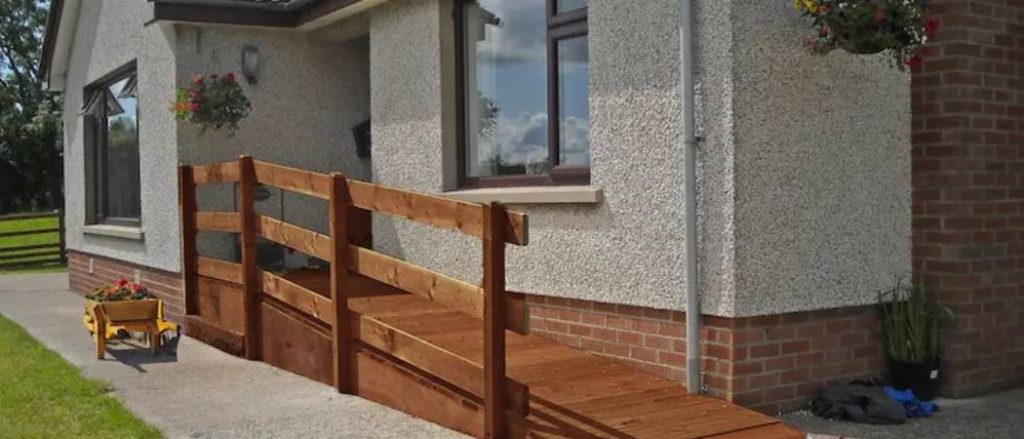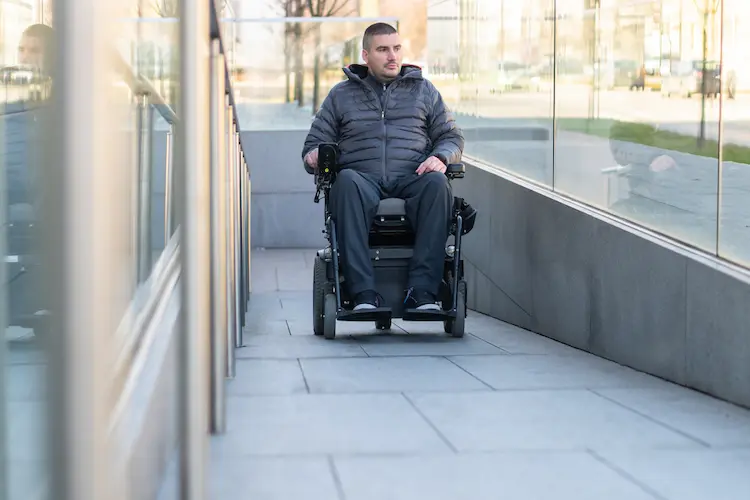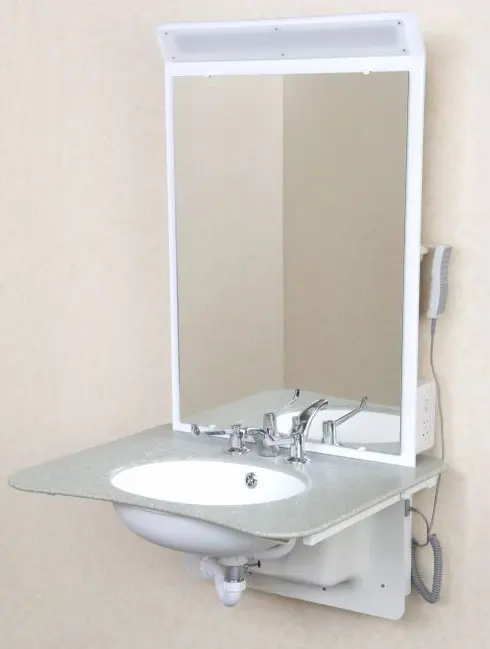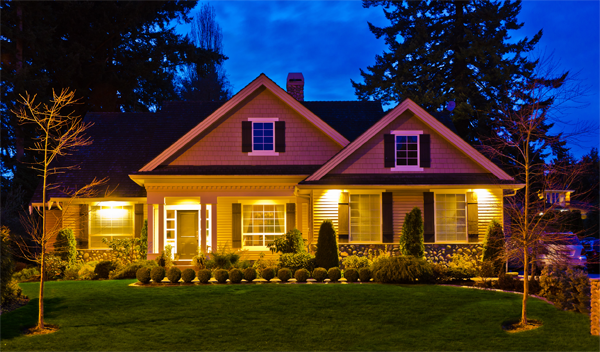Home modifications can be a game-changer, especially for those with specific needs or challenges in their living spaces.
Whether for an aging loved one or a family member with a disability, or to accommodate your changing requirements, it is essential to modify a home to be more accessible and secure. Our guide aims to demystify obtaining free home modifications, ensuring that financial constraints don’t hinder necessary improvements.
Understanding Home Modifications
What Are Home Modifications, and Why Are They Important?
Home modifications are adaptations made to a living space to make it safer, more comfortable, and better suited to the needs of its occupants.
It could mean installing ramps for wheelchair access, lowering kitchen counters for easier reach, or even replacing doorknobs with pull handles for those with limited hand strength. These changes can make a significant difference in the daily lives of people with disabilities or older adults wishing to age in place.
But why are these modifications so crucial? For many, they are the key to maintaining independence and quality of life. Home modifications can prevent accidents, reduce the need for external care, and even delay or negate the necessity of moving to a specialized facility like a nursing home.
For individuals with disabilities or older adults, these changes can be the difference between a risky, dependent living situation and a safe, independent lifestyle. By reducing the risk of falls and accidents and improving accessibility, home modifications empower individuals to live more confidently and comfortably in their homes.
Exploring Financial Assistance Options
When it comes to home modifications, understanding the financial assistance options available can significantly ease the process.
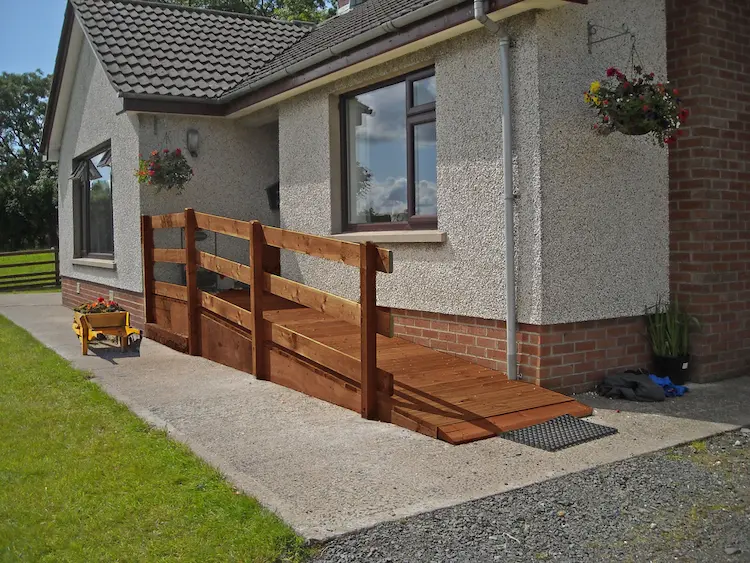
Navigating the World of Financial Assistance for Home Modifications
One of the biggest hurdles in undertaking home modifications is the cost. Fortunately, there are several avenues for financial assistance. From government programs to private grants, various options can help cover the expenses of making your home more accessible. Understanding these options is the first step towards a safer, more comfortable home.
Government initiatives like the Specially Adapted Housing Grant and programs under the Older Americans Act offer significant support for eligible individuals. These programs are designed to assist veterans, older adults, and disabled people in making necessary home modifications. Additionally, local housing and urban development offices often provide resources and guidance on accessing these funds.
But government programs are just one of many sources of help. Many non-profit organizations and private foundations offer grants and assistance specifically for home modifications. These can be particularly helpful for low-income families or those not qualifying for government aid.
Here are some notable ones:
- Rebuilding Together is a non-profit organization that provides services for low-income homeowners, especially the elderly, disabled individuals, and families with children, to enhance home safety and accessibility through repairs and modifications.
- Habitat for Humanity, renowned for building homes, provides a Home Preservation Program that offers exterior home repair services to low-income homeowners, ensuring they can continue living in safe, decent homes for years.
- The National Council on Independent Living (NCIL) provides advocacy and resources for disabled people, including home modification programs, local assistance, and grants.
- The Home Depot Foundation provides grants and volunteer support for home modifications, focusing on veterans and service members.
These organizations represent just a few of the many resources available in the USA for home modifications.
It’s also worth exploring low-interest loans as a viable option, especially for larger projects that grants may only partially cover.
Specific Modifications and Their Benefits
Home modifications can range from minor adjustments to significant renovations, each tailored to meet specific needs and enhance the quality of life for residents. Understanding the particular types of modifications and their benefits is crucial to planning a successful home adaptation project.
Installing Grab Bars and Handrails
One of the simplest yet most effective modifications is the installation of grab bars and handrails in key areas like bathrooms and staircases. These features provide stability and support, significantly reducing the risk of falls, especially for older adults and people with mobility issues.
Widening Doorways
For individuals using wheelchairs or walkers, navigating narrow doorways can be a challenge. Widening doorways not only facilitates more effortless movement throughout the home but also enhances the overall accessibility of the space.
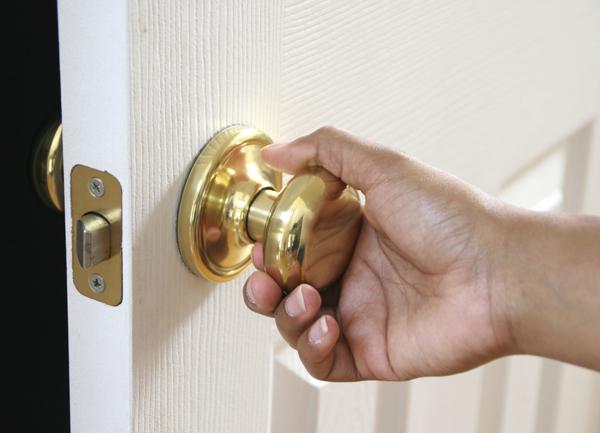
Bathroom Modifications
Bathroom modifications are another key area of focus. Installing features like walk-in showers and grab bars near toilets and in shower areas enhances safety and usability. These changes can be life-altering, especially for those facing mobility or balance challenges.
Wheelchair Ramps
Installing wheelchair ramps is essential for homes with steps at the entrance. Ramps provide safe and easy access for wheelchair users, eliminating the barriers posed by stairs.
Lowering Kitchen Counters and Cabinets
Lowering kitchen counters and cabinets makes the kitchen more accessible for wheelchair users and people of short stature. The modification allows for easier reach and use of kitchen amenities, promoting independence in meal preparation.
Smart Home Technology
Incorporating smart home technology, such as voice-activated systems, automated lighting, and security features, can significantly enhance the living experience, especially for individuals with limited mobility or visual impairments.
Sarah Harrison, OT, advises what is needed for a modified home.
Each modification, no matter how small it may seem, is a step towards enabling individuals to live independently and comfortably in their homes, significantly reducing the risk of accidents and improving their overall quality of life.
For a detailed guide on creating a wheelchair-accessible home, covering aspects from entrances to flooring, check out these practical tips for having a wheelchair-accessible home.
Navigating Government Programs and Grants
The Specially Adapted Housing Grant is a critical resource, especially for veterans who require home modifications to accommodate service-related disabilities. The grant provides substantial financial support, making necessary home modifications more attainable. Similarly, the Older Americans Act assists older adults looking to adapt their homes better to suit their aging needs. These programs are a testament to the federal government’s commitment to supporting its citizens in maintaining their independence and quality of life at home.
Navigating these government programs can be daunting, but understanding the eligibility criteria and application process is crucial for success. The Department of Housing and Urban Development (HUD) is a valuable resource on the journey. HUD provides comprehensive guidance and resources to help individuals effectively navigate these programs.
It’s essential to gather all necessary documentation, such as proof of income, disability, or age, and seek advice from experts or counselors who specialize in these areas to maximize the chances of receiving the needed assistance.
Local Resources and Community Support
Maximizing Home Modification Success with Local Resources and Community Involvement
Local resources and community networks play an indispensable role in the success of home modification projects. Area agencies on aging, community development programs, and local non-profits often have knowledge and connections that can prove invaluable in these endeavors. They can guide homeowners to reputable local contractors, provide information on additional funding sources, and offer support and advice throughout the modification process.
Engaging with non-profit organizations and community groups can be particularly beneficial. These entities often have a deeper understanding of the local landscape and can provide personalized assistance that aligns with individual needs. They may offer practical advice, support services, and sometimes even volunteer labor to help with home modifications.
By tapping into these local networks, homeowners can access a broader range of resources and community support, making the modification process smoother and more effective.
Tips for Successful Home Modification Projects
Strategies for Planning and Executing Effective Home Modifications
Effective planning is the foundation of any successful home modification project.
Begin by conducting a thorough assessment of your specific needs. Consider not only your current requirements but also anticipate potential future needs. Research the types of modifications that would be most beneficial for your situation. Such foresight ensures that the modifications will serve you well, adapting to changing needs and circumstances.
Selecting the right contractor is a critical step in the process. Look for professionals with a proven track record of accessible home modifications. It’s essential that they not only understand your specific requirements but can also execute the project within your budget constraints. Conduct thorough research, check their references, and review their previous work to ensure their quality and reliability. A trustworthy and competent contractor can make a significant difference in the success of your project.
Sustainability and durability should be key considerations in your planning. Opt for high-quality materials and thoughtful designs that will endure. Such an approach ensures long-term usability and safety and helps maintain or even increase your property’s value. Effective home modifications are more than just a short-term solution; they are a long-term investment in your safety, comfort, and independence.
Real-Life Stories
The transformative power of home modifications is best illustrated through real-life stories.
Sarah is a young woman with mobility challenges. After receiving a home modification grant, she had a wheelchair ramp installed, and her doorways were widened. It not only enhanced her mobility within her home but also significantly improved her overall quality of life, fostering a sense of independence and dignity
Carol, who has paraplegia, shares a tour of her home modifications after her spinal cord injury.
John is an elderly gentleman who benefited from bathroom modifications. With the installation of grab bars and a walk-in shower, funded through programs like the Older Americans Act, John’s risk of falling was significantly reduced. These modifications allowed him to age in place safely, maintaining his comfort and familiarity with his home.
These stories underscore the profound impact that well-thought-out home modifications can have. They’re not just about physical changes to a property; they’re about empowering individuals and enhancing their safety and quality of life.
“If you’re planning to host a wheelchair user in your modified home, here are some essential things to remember when inviting a wheelchair user to your home.
FAQs Section
How does home modification work?
Home modification involves customizing a living space to suit the needs of its occupants better, particularly those with disabilities, seniors, or anyone requiring better accessibility. The process can range from minor adjustments, like installing bathroom grab bars, to more significant renovations, such as widening doorways or constructing wheelchair ramps. The key is to assess the specific needs of the individual and tailor the modifications accordingly.
Can I get financial assistance for home modifications?
Yes, various programs and grants offer financial assistance for home modifications. It includes government initiatives like the Specially Adapted Housing Grant, which is particularly beneficial for veterans, and local and state programs aimed at low-income homeowners or people with disabilities. Researching these programs thoroughly is crucial, as is understanding their eligibility criteria and applying accordingly to receive the necessary financial support.
Are there specific modifications for aging in place?
Certain modifications can be particularly beneficial for individuals looking to age in place. These include bathroom modifications for safety, such as grab bars and walk-in showers, lowering kitchen counters, and installing lever-style door handles for easier access. These adaptations not only aid in maintaining independence but also ensure safety and comfort in the home.
For those considering more extensive modifications or new construction, exploring modular homes built specifically for handicapped or senior citizens can provide tailored solutions.
Conclusion
In wrapping up the comprehensive guide on home modifications, it’s clear that these alterations are far more than physical changes to a residence. They are transformative steps towards fostering a safer, more accessible, and more comfortable environment for diverse individuals, including those with disabilities, seniors, and low-income families.
At their core, home modifications are a long-term investment in a future where comfort and security are accessible to all, regardless of age or physical ability. By embracing these changes and utilizing available resources effectively, we contribute to building more inclusive and supportive communities.
For those seeking further information or assistance, numerous resources are available. The Department of Housing and Urban Development offers guidance and potential financial aid for home modifications. Additionally, the Eldercare Locator is an excellent resource for finding local support services, especially for older adults looking to make their homes more age-friendly.
These resources are invaluable for anyone embarking on the home modification journey, offering support and guidance at every step.
